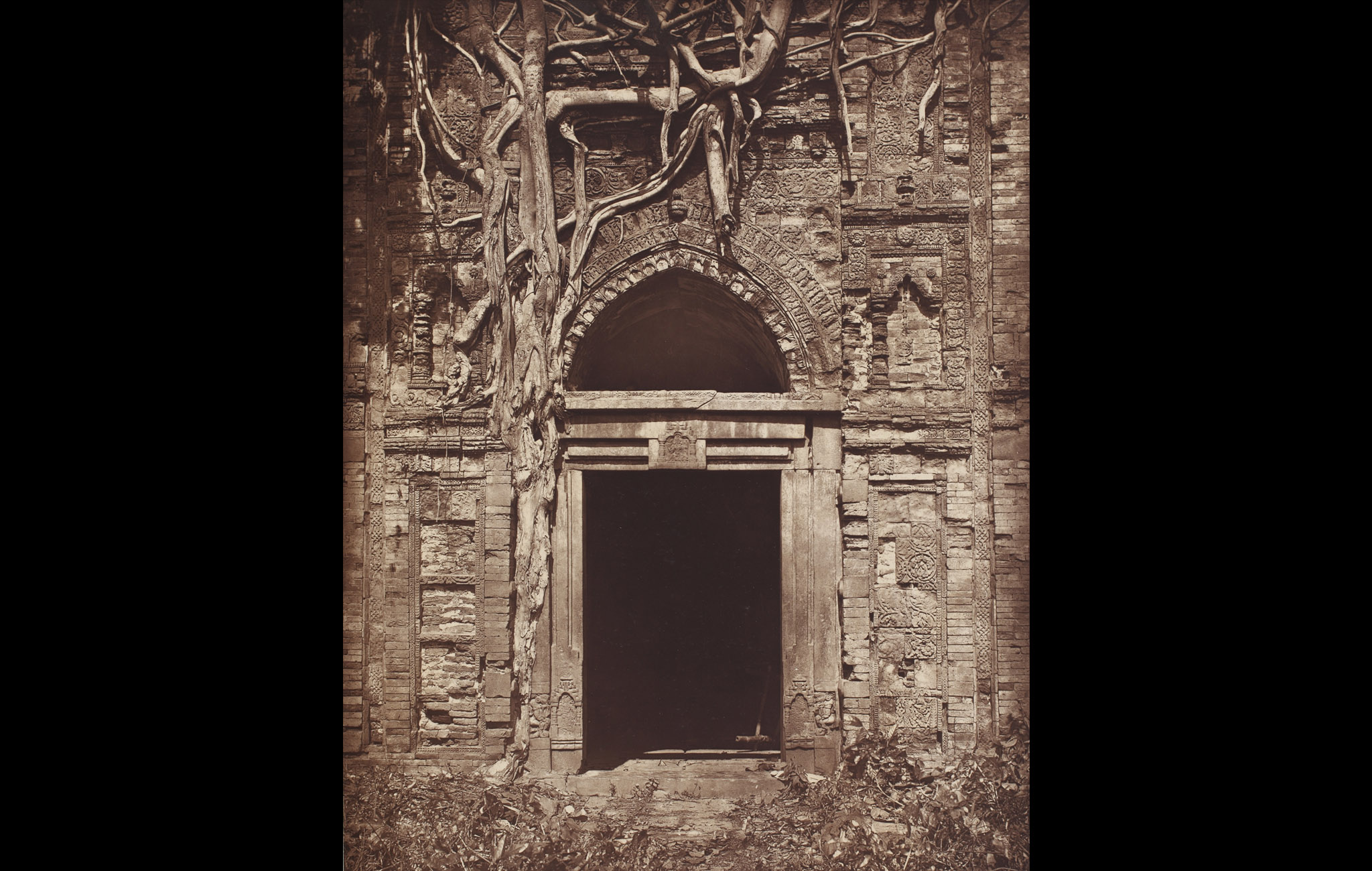
Presumably named Ekhlakhi because it is said to have cost one lakh rupees, this mausoleum in Gaur bears three tombs — considered to be those of Jalaluddin Muhammad Shah, his wife and his son. Shah was the son of Raja Ganesha, a Hindu ruler of Bengal who came to power in 1415, marking the end of the first period of rule by the Ilyas Shah Dynasty. Upon his death, his son Jalaluddin Muhammad Shah, a convert to Islam, seized the throne and ruled for 16 years. Notably, the doors and lintels of the mausoleum are covered with Hindu carvings.
The ancient city of Gaur, also known as Gauda, Lakshmanavati, Lakhnauti and Jannatabad, served as the seat of many powerful dynasties over time – the Buddhist Pala kings from the 8th century onwards, the Hindu Sena kings from the 12th century on, eventually falling into the hands of the Delhi Sultanate in 1204. It thrived during the Bengal Sultanate, passing between prominent dynasties including the Ilyas Shahi, Habshi and Hussain Shahi kings.
This photograph was published in Gaur: Its Ruins And Inscriptions by John Henry Ravenshaw in 1878. Ravenshaw was a Bengal Civil Service worker who was stationed as Magistrate and Collector at nearby Maldah. He had the opportunity to explore and photograph Gaur between 1865 and 1867. While Ravenshaw died in 1874, this volume of photographs and notes were arranged to be published thereafter by his widow, Caroline.
To read more about Gaur, as well as view more of Ravenshaw’s photographs from the region, click here .
Title
Entrance To Eklakhi Mosque, GaurPeriod
1860sAlbum Title
Gaur: Its Ruins And Inscriptions, 1878Photographer
John Henry RavenshawPublisher
Caroline RavenshawAccession No.
2016.26.1 (38)Genre: Photography
